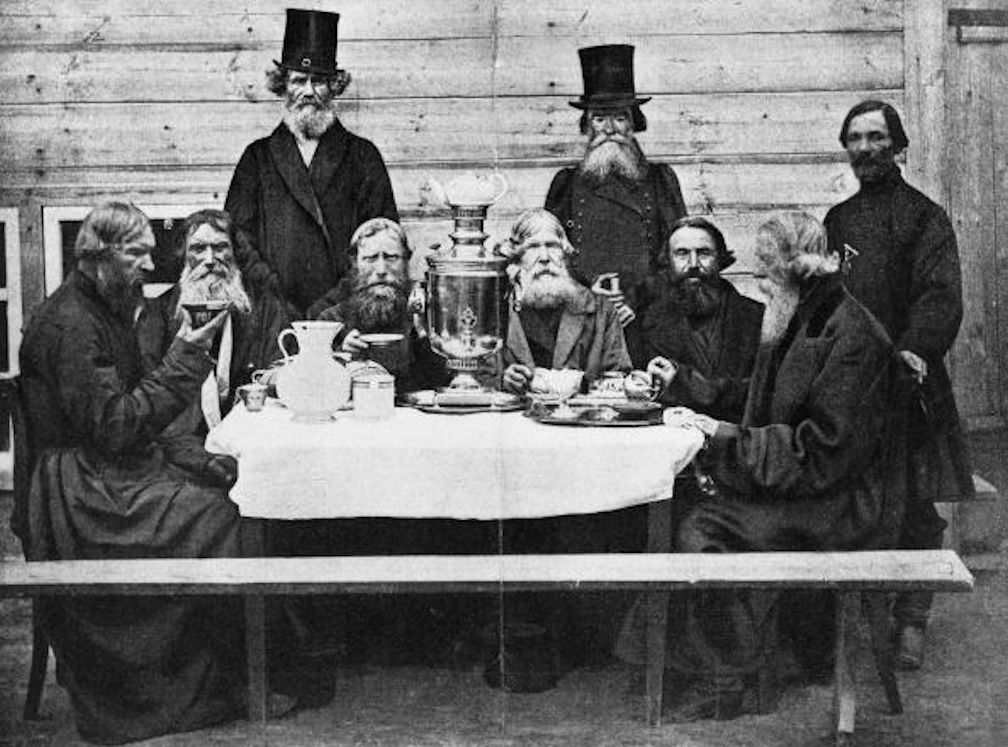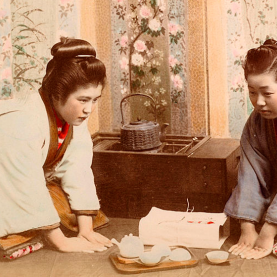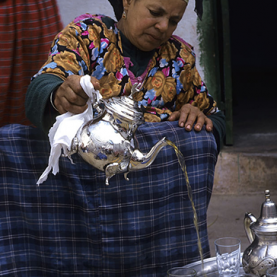Tea in Russia
In the 19th century, tea was enthusiastically adopted by one and all throughout Russia. The Russians developed their own tea-drinking customs, which came to be known far beyond their borders. They are to be credited for ‘Russian flavoured’ tea but, above all, for the samovar, which became an iconic symbol of hospitality.
Tea for everyone
Tea arrived in Russia via caravans from Mongolia. For a long time it remained an aristocratic beverage, consumed in towns and cities. It enjoyed spectacular success in the 19th century and became widely consumed by all strata. People would drink several cups a day, at home and in public establishments, with family, friends and business associates. Even when consumed in the simplest isba (Russian log hut), tea had to prepared in a samovar, which would keep it hot for several hours. Numerous writers, whether Russian or of other nationalities, have described the ritual surrounding this beverage and the feeling of well-being that it induces.
The samovar: thermos and kettle
Samovars work in an ingenious way. Water is heated by a firebox located in the base. A teapot, filled with concentrated tea, is placed on top of the samovar, which maintains it at just the right temperature. As soon as the water in the samovar is hot (it should not boil), it is poured from the faucet into the cup or glass to dilute the concentrated tea. The first samovars were made in Russia in the 18th century, but the most prestigious came from Toula (to the south of Moscow). They were made of copper or bronze and sometimes silver. A few rare ones in porcelain and glass have survived to the present day. Samovars were not only successful in Russia: they were also adopted in Turkey, Iran, Morocco and Azerbaijan.
The flavour of Russian tea
Traditionally-speaking, Russians preferred strong black tea from China with a heady aroma and they would let a spoonful of sugar or jam dissolve in their mouths just before drinking it. In his Grand dictionnaire de cuisine, the author Alexandre Dumas wrote, “the best tea is drunk in St. Petersburg and in general across all Russia”. Blends of different teas (including the famous smoked black tea Lapsang Souchong) were created for the Russian market and became fashionable throughout Europe in the 19th century. This gave rise to the expression “Russian flavoured tea”. It can still be found in shops today, but the blends are no longer exactly the same. The most well-known was created around fifty years ago. To please fans of Earl Grey, it was flavoured with bergamot, which was not found in the original Russian tea. Citrus fruit was also added.
From cup to glass
In his Grand Dictionnaire de cuisine, Alexandre Dumas recounts that the first tea cups were made in Cronstadt (to the west of St Petersburg) and that the bottom of the cups portrayed a view of the town. In order to save money, some unscrupulous café-owners used only a very small quantity of tea and the resulting drink would be so light in colour that the town of Cronstadt unfortunately remained visible. Rather than make stronger tea that would have hidden the view of the town, a manufacturer had the idea of replacing the cup with a glass, without the image. A popular legend maybe, but it is true that tea was also drunk out of glasses, encased in a metal holder.
TOUSSAINT-SAMAT, Maguelonne, 1997. Histoire naturelle et morale de la nourriture. France : Larousse
PERRIER-ROBERT, Annie, 1999. Le thé. Paris : Éditions du chêne - Hachette Livre.
CHA SANGMANEE, Kitti, DONZEL, Catherine, MELCHIOR-DURAND, Stéphane, STELLA, Alain, 1996. L’ABCdaire du thé. Paris : Flammarion.








